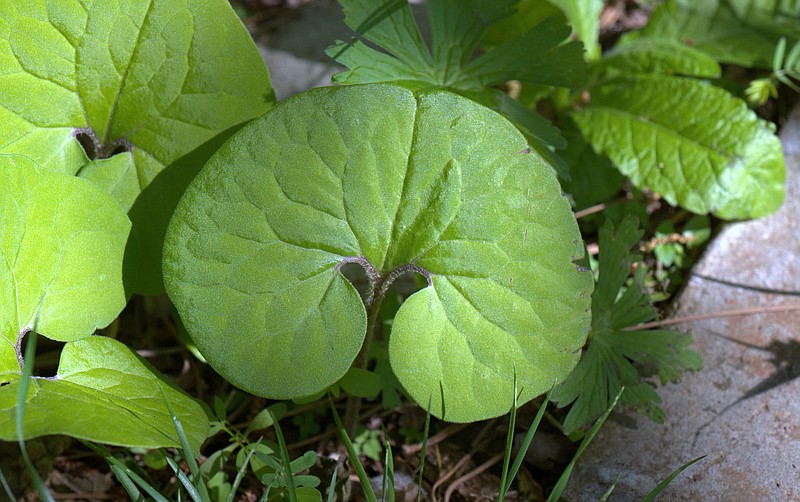Wild ginger (Asarum canadense) is one of the most known spring wildflowers around the country.
It's spreading leaves and tolerance to shade make it a perfect choice for woodland gardens, especially for moist areas. The edible part of this plant is the aromatic spreading stem or rhizome. Leaves and flowers are not edible.
According to Daniel Moerman's book "Native American Food Plants," uses of wild ginger by the early Native Americans include the Chippewa, who used it as an appetizer in all cooked foods; the Meskwaki, who used it as a spice to improve the muddy taste of catfish; the Ojiwa, who used the root to render meat; and the Potawatomi, who also used it as a spice to flavor meat or fish or make food in general tastier.
Wild ginger is propagated from seed or from the rhizomes that sprout readily. As stated in Peter Loewer's book, "The Wild Gardener," it is recommended as a native ground cover. My husband and I have established ginger in various shaded areas of our front lawn and backyard, where it is establishing well-formed spreading mats. It is growing steadily every year, even in poor soil. We like it as a good substitute for grass and because it offers cover for pollinators under the dense foliage.
With its round-heart shaped leaves and short stature to no more than 6 inches, it is a very attractive plant that can be established in the company of taller spring blooming wildflowers like sweet williams, wild geranium and shooting stars, or with summer blooming wildflowers that will provide shade later in the season. This is also a good garden plant because deer, rabbits and insects rarely eat it. This plant is easily available in native plant nurseries. For a list of sources, visit the GrowNative! website.
In spite of its name, wild ginger is not related to the commercial tropical ginger we find in stores or farmers markets. Tropical ginger belongs to Zingiberaceae family that includes ornamental ginger. Wild ginger belongs to the Aristolochiacea family that includes two important species for wildlife: the Dutchmen's pipevine (Aristolochia macrophyla) and Virginia snakeroot (A. serpentaria). Both plants are host plants of the pipevine swallowtail caterpillar butterfly. The first one is easily available in native plant nurseries, the later is not and is considered endangered in parts of its range. There are several other Asarum spp. in the United States. The British Columbia wild ginger (Asarum caudatum) is also commercially available but should be grown only in western United States.
The flowers form at the base of each individual two-leaf plant, next to the surface. They are inconspicuous unless someone is curious enough to look for it under the foliage. Flowers can be pollinated by the passing ant or crawling critters like slugs.
Wild ginger can be used in recipes to substitute tropical ginger. I recommend using it if you have a well-established patch.
Wild ginger can be prepared in candy like tropical ginger. To prepare a syrup, gather 1/4 cup of rhizomes, clean and boil it for 20-30 minutes and add sugar. Let it simmer and store in air-tight containers. This syrup is good on pancakes or fresh toast, or use to sweeten drinks or teas.
Dr. Nadia Navarrete-Tindall, previously an associate professor for Lincoln University Cooperative Extension, is now a native plant specialist independent consultant. She can be reached at [email protected] or on Facebook: Native Plants Program. She offers educational workshops about native edible plants and other topics on native plants as well as consultation on native plants for your yard. For more recipes and details, see Randy's blog, Nadia's Backyard at nadiasyard.com.


